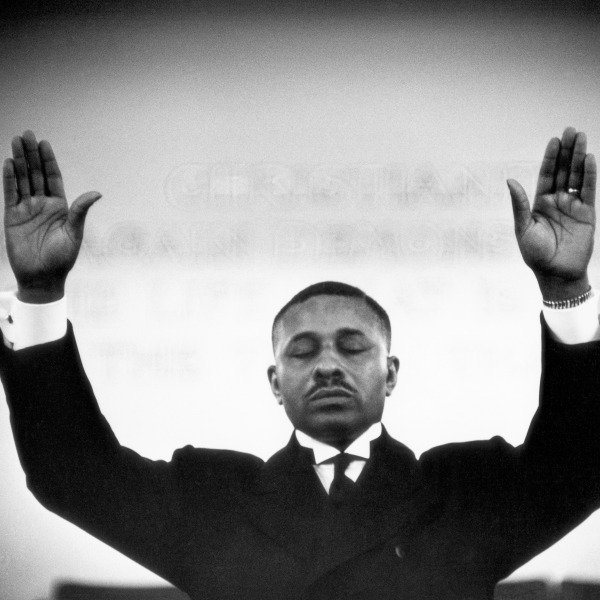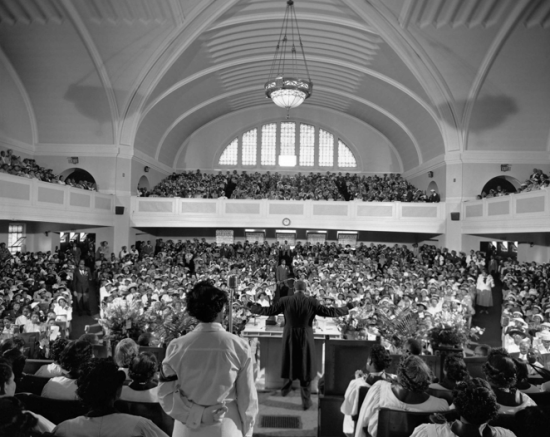
And there were the churches, big ones, little and middle-sized ones scattered among the taverns, butcher shops and mortuaries. On Sunday mornings, I turned my camera on those ardently religious folks as they went, in their Sunday best, to the store-front Bethels, God in Christs, African Methodists and Pilgrim Baptists that they kept going with pennies, nickels and dimes. ‘Religion is all we got left,’ an old missionary woman told me one day.
– Gordon Parks, A Choice of Weapons (1966)
Throughout his career, Gordon Parks consistently turned his camera toward sacred spaces defined by Black religious traditions. His recollection of Chicago’s South Side neighborhood during the 1940s published in his first memoir A Choice of Weapons documents the omnipresence and integration of religious sites into the larger secular urban landscape. This observation remained true when he returned to Chicago in 1953 with the charge to photograph Metropolitan Missionary Baptist Church and its pastor, Rev. Ernest Franklin Ledbetter for Life magazine, following a two year stint in Europe. The Metropolitan Missionary Baptist Church assignment presented a rare opportunity for Gordon Parks to serve as both photographer and author, after the journalist who accompanied Parks was dismissed for offending church decorum. In this 1953 series, he returned to the narrative building blocks of his 1942 Farm Security Administration (FSA) photographs of Ella Watson, a government charwoman in Washington, D.C., whom he photographed at work, at home, and at church. Both his earlier FSA series and his photographs of Metropolitan Missionary Baptist Church include striking compositions defined by stark tonal contrasts, an interest in representing community as part of a whole, and constant attention to the material and gestural qualities of rituals that structure daily life.
For Parks, Metropolitan Church pastor, Rev. Ernest Franklin Ledbetter, served as a community guide in shaping Parks’s vision, a role comparable to that of Ella Watson. In his photographs of Metropolitan Church, Parks moves between close visual studies of Ledbetter and church members engaged in service, on the one hand, and expansive photographs of the congregation as a collective, on the other. This communal character study of Rev. Ledbetter and members of Metropolitan Missionary Baptist Church is punctuated by visual themes of community formation in the wake of the Great Migration, freedom through movement and gesture as well as the boundlessness of church ministries beyond the church building. Parks once stated that the “story on the black Metropolitan Missionary Baptist Church in Chicago in 1953 had helped set the pattern for my best work during the next fifteen years.” The pattern Parks refers to provides insight into his continual examination of religious subject matter and his refinement of character-centered visual storytelling that weaves the individual throughout the communal whole.
Although the photo essay on Metropolitan Church never appeared in Life, Parks regarded it as proof of “specific moments” when the humanity, dignity, compassion, and determination of a community pierce the conscience of viewers.
Melanee C. Harvey is the 2023 recipient of the Gordon Parks Foundation’s Genevieve Young Fellowship in Writing. This exhibition accompanies the book Gordon Parks: Pastor E.F. Ledbetter and The Metropolitan Baptist Church, 1953, published by The Gordon Parks Foundation, Howard University, and Steidl, 2025.

Gordon Parks, Untitled, Chicago, Illinois, 1953